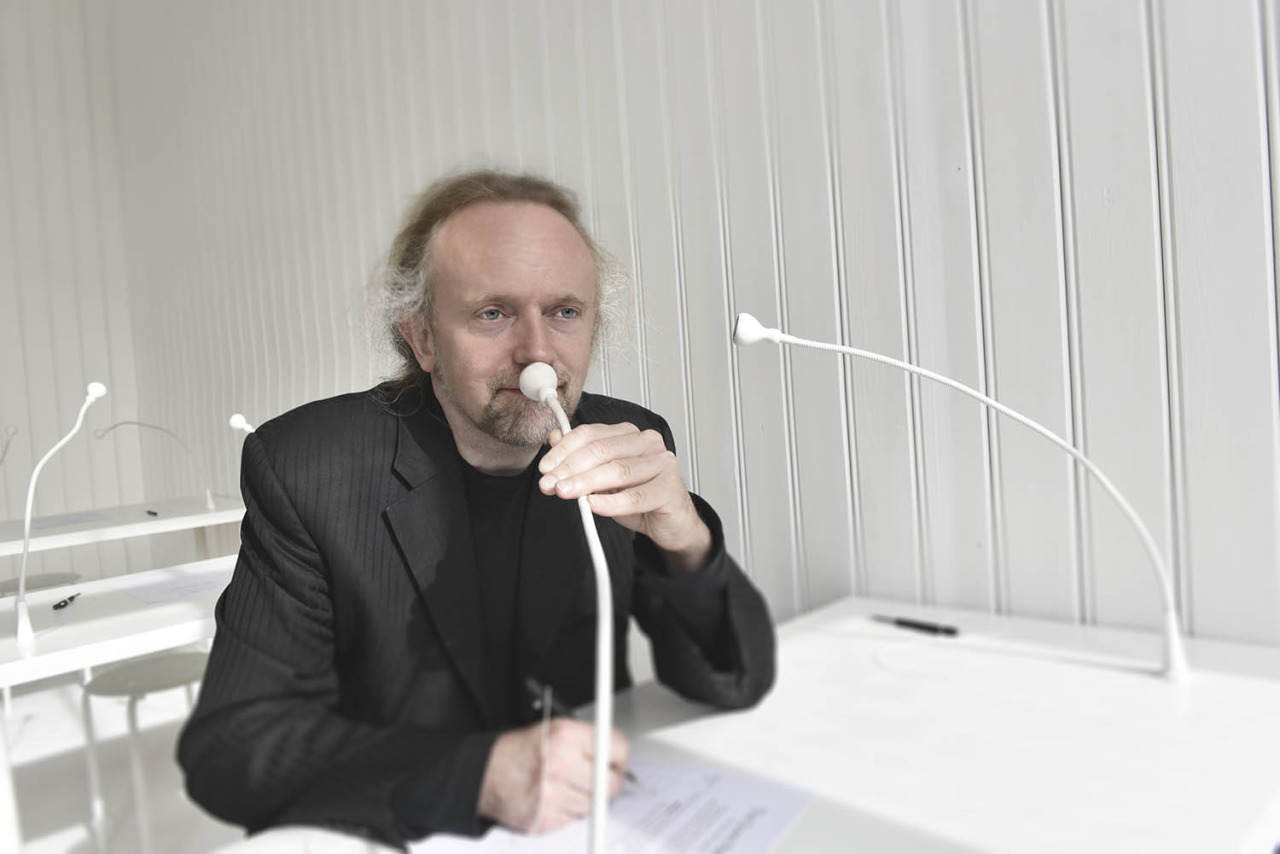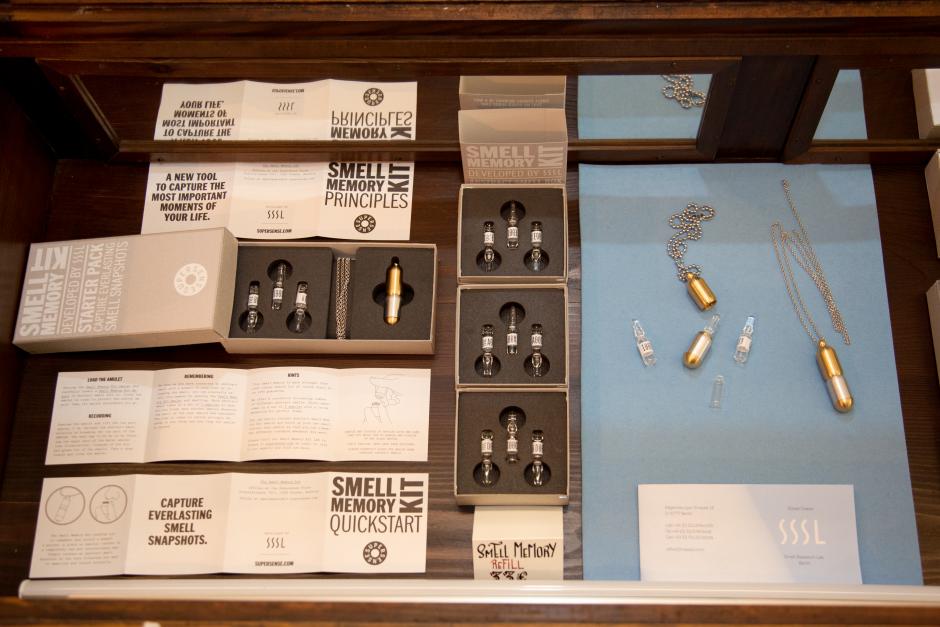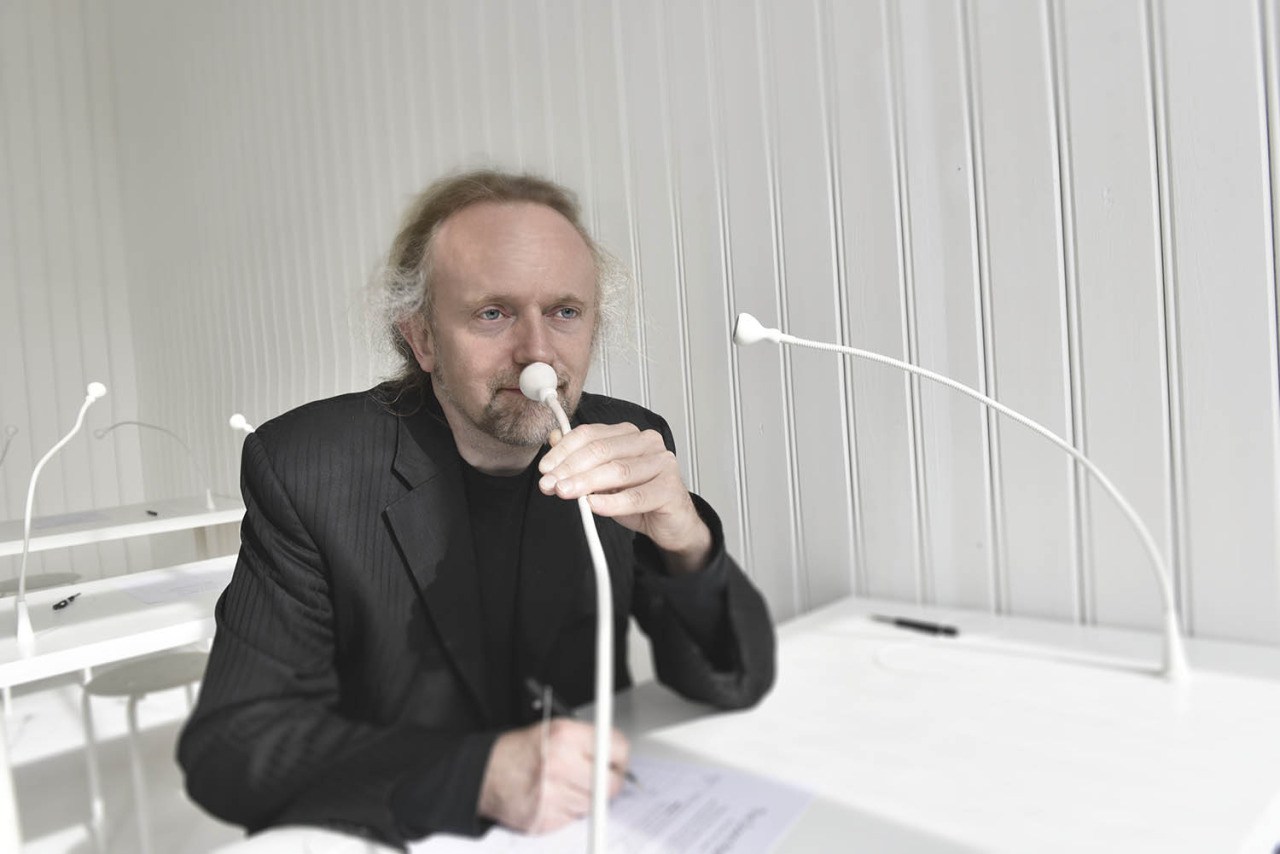Olfactory Memoirs challenges both emerging and experienced writers to reconstruct memories through the sense of smell. Continue reading “What is smell’s relationship to narrative?”
Tag Archives: olfactory art

A review of Tate Britain’s Sensorium ~ by Eddie Bulliqi — Basenotes.net
“I will not forget this exhibition any time soon, and this is one of its strengths. However, I still don’t feel that it truly achieved its aim of ‘encouraging a new approach to interpreting artworks’. Facetious as this comment may be, of course the technology and stimuli behind this project will alter the experience you have in front of the painting, simply because it’s not where it normally is in a white room…â€
Read more at:Â http://www.basenotes.net/features/3179-a-review-of-tate-britains-sensorium
Morgan Wong, That’s How I Used to Know I Have In Fact Crossed This River, 2015
Even after reunification, it is not only physical boundaries that still set apart Hong Kong and China; there is also the invisible separation between the two places through scent. Lowu Bridge is one of the most prominent connection-division junctions between Hong Kong and Shenzhen where one can immediately sense the distinction in scent beyond the border controls.Â
For this new commission, Wong worked closely with a senior perfumer from International Flavors & Fragrances, a leading company in the design of synthetic scents, to create a scent of the memory of arriving onto the other side of the Lowu Bridge (including the “scent of human oil, sweat, metal, grass, fuel etc.â€).Â
Apart from scent, the work also includes a sculpture in the form of a pavilion referencing a historical image. The work is currently on show until 6th Sept 2015 at Para/Site Art Space, an internationally acclaimed non-profit art space in Hong Kong. You can read and see more here.
Smelling boundaries
Not only physical boundaries still set apart Hong Kong and China even after the reunification, but there are also invisible segregation like scent between the two places. This art project by Morgan Wong works with this situation. Continue reading Smelling boundaries
Dawn Spencer Hurwitz creates ‘scent experience’ for Denver Art Museum’s IN BLOOM show
Olfactory art is on the cutting edge of the multi-sensorial art experience. More galleries and museums are working with olfactory creatives to enhance the art experience by expanding and building upon the visitor’s overall sensory experience. Olfactory art has been a growing trend in the past few years in Europe and Asia; now the US is starting to embrace the advent of the multi-sensory movement evidenced by an Olfactory Art show at NYC’s Museum of Art and Design, as well as the institution of a new “Award for Experimental Use of Scent†– the Sadakichi – at LA’s Institute of Art and Olfaction.

Denver Art Museum (DAM) is out in front of this trend with their ongoing collaborative efforts with perfumer and olfactory artist, Dawn Spencer Hurwitz. This collaboration resulted in a project, Chroma, that was a finalist for the aforementioned Sadakichi Award, and continues with the upcoming ‘scent experience’ created for the In Bloom: Painting Flowers in the Age of Impressionism exhibit that opened on July 19, 2015.
“To have the opportunity to create an immersive scent experience within the painting show itself is thrilling for meâ€, says Dawn Spencer Hurwitz (DSH). “It’s very innovative for an established visual art venue like DAM to incorporate olfactory art directly into a painting show to enhance the experience of the visual art. When visitors walk through the scent experience they will be transported through time and space to a moment in Monet’s flower garden at Givernyâ€.
When museum-goers enter the scent experience space they will be met with a large scale view of the artist Monet in his beloved flower garden and a subtle sense of greenery and moist earth; as if walking into a “real†garden.
Before leaving the scent experience visitors are invited to take a scratch and sniff card of “Giverny In Bloom†as a memento as well as to bring the multi-sensory aspect of the olfactory art with them to enhance their interaction with the remainder of the exhibit.

“I wanted to give the sense of ‘Impressionism’ within the design style of the scent experience,†says DSH, “to match the qualities of the painterly style with the sense of the aromatic experience. I wished to impart a kind of airy, light-filled, plein air feeling, that of the multitude of scents one encounters in a garden, rather than giving an ultra photo-realistic quality to each element of the composition. This is how I worked to make the flower garden come aliveâ€.
Dawn Spencer Hurwitz creates ‘scent experience’ for Denver Art Museum
Olfactory art is on the cutting edge of the multi-sensorial art experience. Denver Art Museum (DAM) is out in front of this trend with their ongoing collaborative efforts with perfumer and olfactory artist, Dawn Spencer Hurwitz.
Continue reading Dawn Spencer Hurwitz creates ‘scent experience’ for Denver Art Museum

Peter de CupereÂ
Perhaps the most prolific olfactory artist today, Peter de Cupere has indeed been very busy recently! After engineering plant/flower scents for his olfactory installation “The Smell of a Stranger” at the 12th Biennial de la Habana, he has two new works at current exhibitions in Belgium: an 8m long olfactory art installation at Museum Texture Kortrijk with the scent Roten Eau de Leie, and “The Scent Reader†at Kunstenfestival Watou. Also, the catalog of the exhibition, The Smell of War, he curated in Poperinge is ready. It gives a nice overview of this unique exhibition, with text in English and Dutch. The exhibition runs until August 30th in De Lovie in Poperinge; here’s an evocative video of it. And this Saturday, July 25, he is conducting a “Scent City Walk†in Palermo, Italy. He is certainly putting his Olfactory Art Manifest into action!
Peter de Cupere: Recent works
Perhaps the most prolific olfactory artist today, Peter de Cupere has indeed been very busy recently! Continue reading Peter de Cupere: Recent works

Smell Memory Kit Lets You Tag Events With Custom-Made Aromas |Â Newsweek
“Other artists have worked with olfaction art, like New York artist Martyna Wawrzyniak, who last year placed an ad in an issue of Harper’s Bazaar of her own sweat disguised as a perfume ad. Brian Goeltzenleuchter crowdsourced the smells of 10 neighborhoods in Los Angeles for a “scent-scape†map shown last year at the Santa Monica Museum of Art. Meanwhile, Peter de Cupere is an artist who created a project called “NY Smells Like,†gathering smells from residents. He also co-created the first smell-recognition iPad app, Olfacio, and invented the first scent piano, the Olfactiano, which plays “scent sonatas.â€â€

L’Art Olfactif Contemporain
A major new publication in French on contemporary olfactory art is out now from Classiques Garnier. The book gathers the input of experts from different disciplinary fields (philosophers, art historians, neurobiologists, artists, and perfumers) who examine the conditions behind the emergence of olfactory art and explore contemporary artistic practices founded on odor and perfume.
Here are the abstracts of some of the essays in the book:
Chantal Jaquet, « Introduction. Des objets à flairer à l’œuvre parfumée »
If the composition of perfume is not considered part of the beaux-arts, is it none- theless possible to conceive of an olfactory artistic creation which is appreciated by the public but independent of the use of fragrance for hygiene or seduction? The objective here is to analyse the emergence of the contemporary olfactory arts and the transition from Marcel Duchamps’ scent objects to the perfumed work of the monosensorial or polysensorial type.
Yoko Iwasaki, « La possibilité de la nouvelle reconnaissance de l’espace et l’art olfactif japonais »
The frequent recourse to smell in installations has prompted an examination of this type of contemporary art and an identification of its specificity. This article shows that installation is doubtless the form of expression most suited to an art based solely on perfume, and demonstrates the decisive role played by smell in the recognition of the space which lies at the heart of Japanese art.
Jim Drobnick, « Smell: the Hybrid Art »
Starting with the idea that olfactory art is necessarily hybrid, this articles focuses on contemporary plastic arts in the medium and explores its different facets, analysing the work of Oswaldo Macià , Leslie Hill, and Helen Paris in particular, as well as that of Brian Goeltzenleuchter
Boris Raux, « Mes chroniques olfactives »
Combining theoretical reflections with a presentation of his work, Boris Raux evokes his olfactory chronicles and the evolution of his work over the course of the past few years. He describes his artistic practices which play with the subversive, plastic powers of smell through performances and installations.
You can find a PDF of the table of contents on the Classiques Garnier site, and abstracts of the essays, as well as the full essay by Boris Raux, on his site (all in French).



